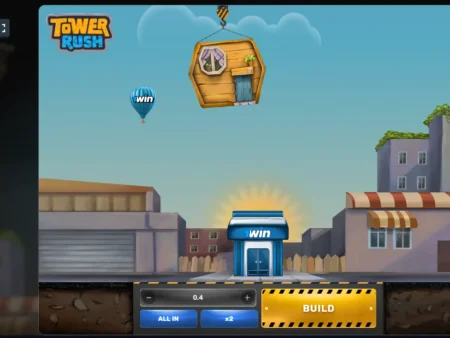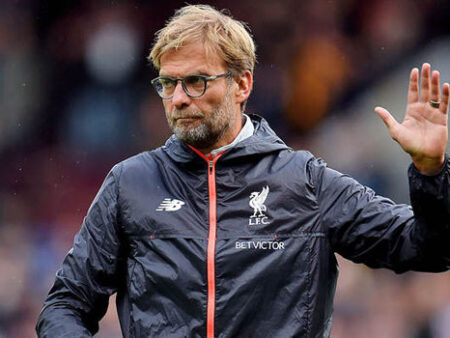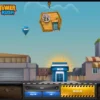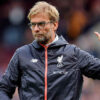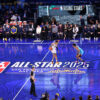
The upcoming North London Derby, held for the first time outside the United Kingdom, marks a critical juncture for both clubs. The perceived disparity between Arsenal and Tottenham Hotspur appears wider than it has been in decades; one would have to look back nearly 50 years, to Spurs` brief stint in the second division in 1977-78, to find a similar positional gap between the rivals.
Arsenal concluded the 2024-25 season in their familiar second-place spot. Meanwhile, for Tottenham, it was a year of contrasting fortunes: they flirted with both success and disaster, ultimately winning the Europa League but finishing a concerning 17th in the Premier League, narrowly avoiding relegation. This domestic outcome led to the departure of Ange Postecoglou, with Thomas Frank swiftly appointed as his successor.
To quickly endear himself to the Spurs faithful, the former Brentford boss will aim to break the team`s six-game winless streak against their formidable rivals, even if it`s just a pre-season encounter. While home advantage traditionally plays a significant role in North London Derbies—Arsenal, for instance, has been unbeaten in Premier League derbies at the Emirates Stadium for 15 years—Spurs are currently on a three-game losing streak at their own ground. Perhaps the neutral turf of Hong Kong, combined with the friendly nature of the match, will provide the impetus needed to challenge the Gunners in the more significant contests ahead. This game alone offers a valuable metric of Tottenham`s summer progress, as acknowledged by their new manager.
Frank stated, “I think it’s a great challenge besides being our biggest rivals and the first North London Derby outside the UK. It’s also right now one of the best teams, I must say unfortunately, in the world. We also need to be honest. In that way it’s going to be a big test, but it’s more than a test as against Arsenal it’s not only a friendly. Of course, it’s a game we will do everything we can to win.”
The central question looms: Can Spurs realistically overcome the 36-point deficit from last season? What is the true limit of what can be expected from Frank`s new squad, and does it align with a worst-case scenario for Arsenal? Let`s delve deeper.
Arsenal`s Potential Floor
One could argue that Arsenal`s performance last season, despite their second-place finish, was not far from a bottom 10 percent outcome for Mikel Arteta`s side. Plagued by injuries, key forwards such as Gabriel Jesus (only six league starts), Bukayo Saka (20), Kai Havertz (21), Gabriel Martinelli (25), and Martin Odegaard (26) collectively missed a significant portion of the season. In such circumstances, the Gunners quickly fell behind Liverpool in the title race, yet even with some stumbles, they were never truly at risk of dropping out of the top four.
Had Arteta commanded greater squad depth, perhaps they could have maintained pressure on the eventual champions. New sporting director Andrea Berta has clearly addressed this, with a sextet of new signings ensuring nearly every position has two experienced, international-level players. The only potential exception might be Martin Odegaard`s role, where Ethan Nwaneri, one of Hale End academy`s brightest prospects, currently serves as backup – a promising, if youthful, option.
Arsenal understands their ceiling: a Premier League title or Champions League glory. But how far might they fall? Excluding unforeseen “black swan” events (a caveat we`ll also apply to Tottenham), it`s difficult to envision the Gunners drifting outside the top four. A third-place finish is a relatively easy projection even if they aren`t at their best, and Manchester City and Liverpool remain dominant.
Perhaps Chelsea could re-enter the mix; they finished only five points behind Arsenal last season, and their expected goal difference (21.16) wasn`t far off Arsenal`s (26.55). Or perhaps Newcastle, if they retain key players like Alexander Isak and start the season strongly, could challenge. In such scenarios, the Gunners might find themselves within the Champions League qualification bubble, but it seems highly improbable for their standing to worsen significantly beyond that.
Tottenham`s Potential Ceiling
Assessing Spurs` last season is complex. For roughly the first third of the campaign, Postecoglou’s team consistently won matches where they were dominant but struggled to convert close encounters. Then came a brutal wave of defensive injuries, even more severe than Arsenal`s attacking woes, making it a rarity to see two regular back-line players on the field. By the time this crisis eased, Premier League title hopes had faded, but the Europa League offered a tempting alternative. Postecoglou understandably prioritized this competition, sacrificing some domestic results for silverware and a Champions League route.
However, the aggregated league performance remains concerning. Finishing 17th might have exaggerated Spurs’ struggles, but their expected goal difference was only 15th best in the division, and the 65 goals conceded marked a defensive nadir, surpassed only by Wolves and the three relegated teams.
Tottenham often played like a team capable of scoring three goals but equally likely to concede four. Their transfer activity this summer has done little to fundamentally alter this dynamic. Mathys Tel’s loan has been made permanent, and Mohamed Kudus arrived as the marquee signing from West Ham. Investment in strengthening the defense appears to be a long-term strategy, with signings like Kota Takai. Crucially, the deep-lying midfielder so desperately needed last season has yet to arrive.
It’s reasonable to anticipate that a coach of Frank’s caliber will strengthen Spurs` defensive capabilities; his Brentford side, for instance, allowed fewer expected goals per game over the past four seasons than his new club. Improved fitness alone should bring defensive output closer to that of the traditional “big six.” But can Tottenham truly hope to overtake their greatest rivals?
Bookmakers suggest otherwise, ranking Spurs around the eighth most likely team to qualify for the Champions League. This seems a fair assessment of their current squad. They possess bright young talents like Destiny Udogie and Lucas Bergvall, who could become key players for a top-four team in the future, alongside veterans such as Heung-min Son (assuming rumors of a move to Los Angeles don`t materialize) and Richarlison, who still have plenty of mileage left. In between, there are perhaps only a couple of key players, like Micky van de Ven (who struggles with availability), entering their prime around 24 years old.
Now, perhaps they will get 38 games from both Van de Ven and Cristian Romero. Perhaps Son will defy the aging curve, and Frank’s coaching acumen will compensate for any midfield defensive limitations. This would represent a top-ten percentile season for Spurs. What might their ceiling be then? Realistically, it could be the cusp of Champions League contention, a position that would be more attainable if a few more of the established “big six” teams falter.
So, could Spurs` ceiling truly take them higher than Arsenal`s floor? Probably not in a season that is vaguely normal; it would necessitate a truly exceptional Tottenham campaign coinciding with an extraordinarily challenging one for Arsenal. However, this is North London, a place known for delivering unpredictable results, where strange things can and do happen in the intense derby atmosphere.
